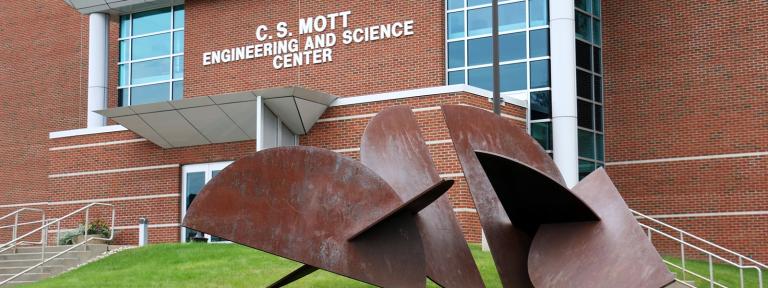
Like Livingston searching for the source of the Nile, Dr. Brent Lewis, associate professor of Environmental Chemistry at Kettering University, is searching for the source of pollution in the Swartz Creek Watershed, and subsequently the Flint River Watershed.
Working this fall to collect sediment cores, the mud at the bottom of rivers and streams, Lewis worked with Kettering Environmental Chemistry students to analyze sediment samples for heavy metal contamination, check for polluted sites and examine the effects of different land uses on metal concentrations.
His work is part of a Department of Environmental Quality (DEQ) funded project with the Flint River Watershed Coalition (FRWC) through the University of Michigan-Flint Center of Applied and Environmental Research (CAER). The FRWC and CAER received a grant to develop a watershed management plan for the Swartz Creek Watershed. The plan will then be used as a model for other sub-watersheds in the Flint River Watershed.
Swartz Creek starts around the Fenton/Holly area, passes the Grand Blanc Landfill and then goes toward the town of Swartz Creek. Lewis and his students will be reporting total metal concentrations in the sediments for the grant.
"CAER is doing GIS mapping (Geographical Information Systems mapping) for the land use throughout the Swartz creek watershed," said Lewis, "and identifying the general land uses and particular problems that need some correcting."
Problems include erosion and nutrient pollution from agriculture, including applications of fertilizer to golf courses and lawns. A growing source of organic/nutrient pollution is consumer products like lawn fertilizer. "As consumers we tend to over fertilize our lawns, or we fertilize at the wrong time and rain washes the fertilizer into storm drains which go directly into the river," Lewis said.
Another source of organic pollution is old cross linkages between the sewer system and existing storm drain systems. "In the 1930s and 1940s, when old storm drain systems were first put in, they built what were called combined sewer systems which sent the storm water to the sewage plant," Lewis said. "The rationale being, that you treat everything before you release it. But what happens with combined systems when you have a very large rainstorm, is they overwhelm sewage treatment plants which dump raw sewage into the river because the plant can't process the combined volume fast enough," he said.
Almost all the systems today have either been separated if they were an old combined system, or the new construction is separated. "Occasionally you get cracks in the system or there are illicit systems hooked into the storm water drains," Lewis said. "All of those are problems that will be looked at as part of building a management plan, and we'll work with the local municipalities and local businesses within the watershed to come up with an inclusive document."
Written by Dawn Hibbard
(810) 762-9865
dhibbard@kettering.edu